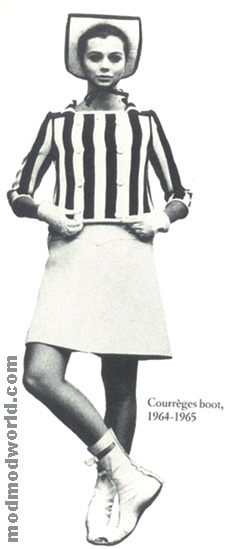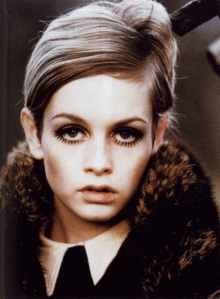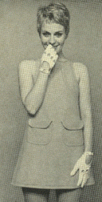


 pic}
pic}

1960s
Bert Sterns lavish lifestyle and photographs of women as sex objects heralded
the 1960's and the growing New York Art scene.
The 1960's were years of major change in fashion and fashion photography.
As Bob Richardson observed "Sex…happened to fashion photography
in the 1960's". Women's roles in society were being questioned and
the youth quake was having an enormous cultural influence. Fashion trends
were not just flowing down from Paris but were coming up from street culture.



In Britain the terrible three David Bailey, Terence Donovan and Bob Richardson were instrumental in introducing spontaneity and sex into fashion photography. The development of the S.L.R. camera aided a more relaxed and realistic approach to portraying fashion and models. These young photographers saw themselves as superstars; the media humoured them and gave them license to create as they wanted. David Bailey's images of Jean Shrimpton and Twiggy epitomised the fashions of the emerging ready to wear boutiques and captured the vitality of the decade. The 1960's saw the profession becoming extremely lucrative and photographers attaining celebrity status. Nova magazine, first published in 1965 reflected the zeitgeist and photographic vitality. The emphasis was more on art and atmosphere than the clothes themselves
The fashion extremes of the 1960's (Space age, hippie, mini) paved the
way for more realistic and wearable clothes in the 1970's. The U.S. recession
and involvement in the Vietnam War helped to bring fashion down to earth
and replace fantasy with realism. Blue denim became the uniform of the
world. Social changes, particularly the changing roles of women, were
echoed with a rise in successful female photographers. Eve Arnold, Deborah
Tuberville and Sarah Moon photographed women on their own terms. Not as
male sex objects or idolised icons of femininity.
Aesthetic ideals were extended to encompass wider conceptions of beauty.
Models such as the Somalian Iman and Hawaiian Marie Helvin rose to prominence.
In America the healthy, All-American model look was epitomised by Lauren
Hutton and Christie Brinkley.
Some of the strongest images of the decade came from the camera of Berlin
born Helmut Newton. Strong, erotic pictures of sexually confident women
challenged ideas of femininity and sexual roles. Guy Boudin captured the
drug fuelled disco culture with superficially glossy images with subversive,
disturbing undertones.